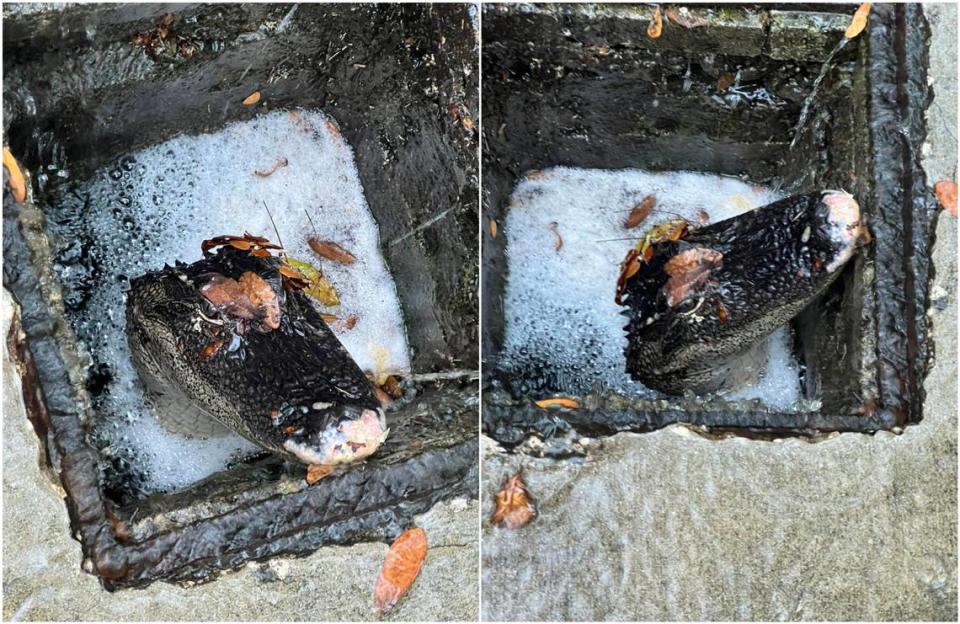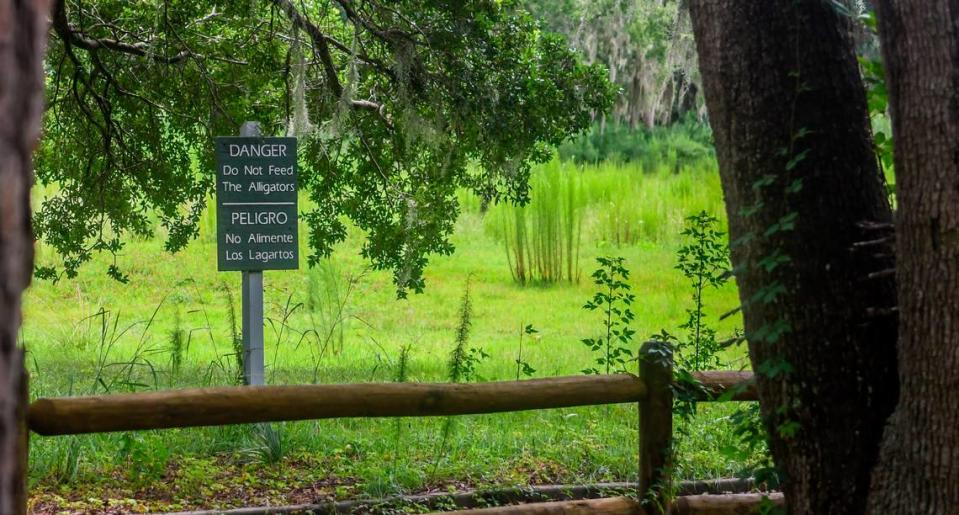Stuck in a drainpipe for months, 6-foot Hilton Head alligator freed to roam again
After months trapped underground in an extended hibernation, this Hilton Head alligator finally got to stretch its legs.
The six-foot gator had been stuck in a small drainage pipe since October, when Port Royal Plantation residents first spotted its snout through the roadside grate on South Port Royal Drive. Matt Kraycar, owner of the Bluffton-based K&K Wildlife Services, rescued the critter from its stormwater solitude Thursday morning. Despite moderate injuries, the gator was released into a Hilton Head lagoon and is expected to make a full recovery.
“I’ve had them in drainage pipes before, but I’ve never seen one in (a pipe) this small before,” Kraycar said. “It was only a 12-inch pipe, and its body was kind of smashed in there.” He guessed the gator got wedged inside the duct after venturing past a tight turn, leaving its long body unable to turn back around.
Neighbors on South Port Royal Drive checked the drain intermittently after their initial sighting in October and only sometimes saw the alligator, according to Kraycar. They called the wildlife removal company Wednesday evening when they realized the animal was trapped.
After removing the metal grate, Kraycar was able to pull the gator to freedom with a catchpole, a humane restraining tool that can be looped around an animal’s neck and tightened. The rescue was done by 11 a.m. Thursday and took about 10 minutes of tugging, he said: “I was shaking him back and forth trying to get him all wiggled out.”

The freed gator didn’t look malnourished, Kraycar said, but the tight squeeze appeared to have rubbed some of its skin down to the bone. He released the reptile at a shoreline about 50 yards away, recording its long-awaited return to the Hilton Head lagoon.
“He kind of hobbled off a little bit, but gators are so strong — I don’t think he’ll have any issues,” Kraycar told The Island Packet and Beaufort Gazette. He wasn’t sure if the animal was male or female but estimated it was at least six years old.
How did the gator survive in the drain?
Kraycar said the trapped alligator could have fed on small fish in the drainage water during his six-month stint in the pipe. Even still, alligators have a markedly slow metabolism and can fast for months, sometimes years.
The species’ biological clock also came in handy. Every winter, alligators go through brumation, a five-month dormant state similar to hibernation that allows cold-blooded creatures to endure cold and freezing temperatures. The animals’ heart rate and metabolism dramatically decrease, helping them conserve energy and survive with little to no food.
“It might not have been a bad time for it to happen,” Kraycar said, noting that the gator became trapped in the drain about a month before brumation’s typical onset in November. “It was probably going in and out of (dormant periods), which helped it stay healthier rather than just being down there in the summer starving to death.”
This predicament isn’t an uncommon one for the Lowcountry’s apex predators. Kraycar estimates his company removes about one alligator a year from local drainage systems, which can be connected to water reservoirs that the animals call home.
Gators might follow fish into the pipes, Kraycar said, or others could be seeking refuge from cold weather in the fall and winter. K&K Wildlife saw a spike in alligator entrapments after Hurricane Matthew, when flooding and irregular water flow forced many of the animals into storm drainage systems. While some were rescued, other large gators were found dead inside the water lines.
The incidents represent one type of clash between human development and alligator populations in the Lowcountry, where residents have long debated how to coexist with the animals. Over 100,000 members of the once-endangered species live in South Carolina, with the vast majority located in coastal areas.


